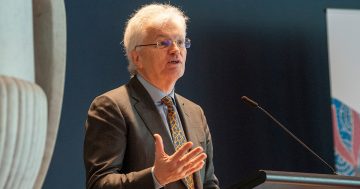Carol Kinsey Goman* says organisations are still trying to cope with change, just as they did 30 years ago. The only difference is that change has…well… changed.
 A reporter once asked Dale Berra, son of baseball great Yogi Berra, and a Major League player himself, if he was similar to his father.
A reporter once asked Dale Berra, son of baseball great Yogi Berra, and a Major League player himself, if he was similar to his father.
To which Dale replied, taking a page from his oft-quoted father:
“No, our similarities are different.”
I thought of this comment when a client I had worked with several years ago contacted me about speaking at a leadership event.
“Sure, I’d love to work with your organisation again,” I said.
“Tell me, are you facing the same problems with change as when I last addressed this audience?”
“Oh no, it’s nothing like before.
“Sure, we are still trying to get people to embrace change, but the change is completely different,” was the answer.
Almost 30 years ago, I began researching, writing, and speaking about managing the human side of organisational change.
At that time, I thought it was a topic that would be a top priority until we’d all mastered the strategies and techniques of change management.
Then the focus would shift to more current organisational challenges.
I was wrong.
Three decades later, dealing with change remains the crucial organisational challenge.
What I overlooked in my assumption of change mastery is the radical way change would, well…change.
Many leaders did become proficient in managing the occasional (or annual) large-scale transformation.
However, managers today are facing a flood of unpredictable, overlapping, and accelerating change that has turned their organisations upside down.
Managing people through that kind of change requires all the communication and leadership strategies we learned in the past — and then some.
The shift from ‘the change’ to ‘constant change’ is more than just semantics.
The increased difficulty lies in the fact that most people and processes are set up for continuity, not chaos.
We’re built to defend the status quo, not annihilate it.
However, the world is throwing change at us with such intensity that there is hardly enough time to regain our equilibrium or catch our breath.
Nor is there much hope that the rate of change will ease in the future.
So, what does it take to manage people through continuous change? Here are some suggestions from the past that you can take into the future.
Realise that resistance to change is inevitable — and highly emotional.
Resistance to change is an inherent result of our neurological make-up.
Change jerks us out of our comfort zone by stimulating the prefrontal cortex, an energy-intensive section of the brain responsible for insight and impulse control.
The prefrontal cortex is also directly linked to the most primitive part of the brain, the amygdala, or fear circuitry.
When the prefrontal cortex is overwhelmed with complex and unfamiliar concepts, the amygdala connection gets kicked into high gear.
All of us are then subject to the psychological disorientation and pain that can manifest in anxiety, fear, depression, sadness, fatigue, or anger.
Didn’t think you were hired to manage emotional turmoil? Think again.
Being aware of, and responsive to, the emotional component of change is now a prerequisite for effective leadership.
Give people a stabilising foundation.
In a constantly changing organisation a sense of stability can still be maintained through corporate identity and collective focus of purpose.
The leader’s role here is to reinforce the organisation’s values, strategies, and vision.
By using the term vision, I’m not referring to a corporate statement punctuated by bullet points.
I’m talking about a clearly articulated, emotionally-charged, and encompassing picture of what the organisation is trying to achieve.
Help your staff/team/Department realise that change really is the only constant.
It’s a mistake to encourage people to believe that once any single change is completed, the organisation will solidify into a new form.
Instead, help people understand that solidity has a much shorter life span than ever before.
As processes temporarily manifest themselves in structures, we all should be getting ready for the next transformation.
Give up the illusion of control.
The biggest obstacle to the organisational flexibility that leaders know they need may be their own unwillingness to give up control.
Rather than tighten the reins, leaders need to loosen their grip to align the energies and talents of their teams and organisations around change initiatives.
Most of us react favourably to change we are part of creating.
Champion information access and knowledge-sharing.
Transparent communication means disclosing the organisation’s inner workings to everyone — not just to the upper echelon.
It requires an unprecedented openness:
A proactive, even aggressive, sharing of financials, strategy, business opportunities, risks, successes, and failures.
People need pertinent information about demographic, global, economic, technological, consumer, workforce, and competitive trends.
Most of all, people need to understand how their actions impact the success of change initiatives.
As one savvy communicator put it:
“My most important function is to present organisational data to the whole enterprise.
“The data are often quite simple, containing a large percentage of information already known to many.
“However, when an organisation is willing to publicly present that information, to listen to different interpretations and to encourage the conversation, the result is a powerful catalyst for change.”
I often tell audiences that organisations don’t change.
People do.
The similarities in today’s continuous change may indeed be different from change in the past, but here’s one thing that has hasn’t changed, and will continue to be true.
People are still the key — or, as Yogi Berra might have explained the importance of the human element in change:
“It’s déjà vu all over again”.
*Carol Kinsey Goman is an international keynote speaker and leadership presence coach. Her work involves Government Agencies and universities. She can be reached by email at [email protected].
This article first appeared at carolkinseygoman.com.











